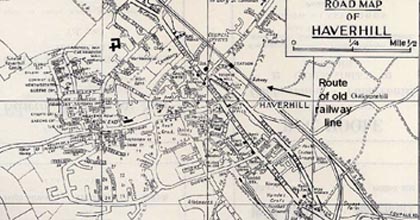


LIVE THE PAST AT COLNE VALLEY RAILWAY

The story of the Colne Valley Railway as it is today
began one evening in the summer of 1973 when two railway enthusiasts walked
a one mile section of the former Colne Valley & Halstead Railway at
Castle Hedingham.
That walk through the undergrowth of the former track-bed by the founder
members of the Railway Company, Dick Hymas and Gordon Warren, inspired
them to create a complete authentic working railway from scratch on what
was effectively a green field site.
Since that first idea the railway has continued to grow and is constantly
acquiring new locomotives and rolling stock. The completion of the Colne
Valley Pullman train in 1989 was a major achievement which is described
in detail in the Colne Valley Railway Guide & Stock Book; it has an
excellent reputation for fine food. Four main line locomotive groups are
now based at the Railway. 45163 Ltd. was formed by a number of CVRPS members
to purchase Black Five steam locomotive number 45163. Its restoration
from scrapyard condition is a long term project. Colne Valley Diesels
Ltd. was also formed by a group of Society members, class 31 locomotive
number D5634 was purchased in 1995.
Haverhill Life would like to thank Paul McCowan and members of the Clare Railway Society in the preparation of this article.

The Colne Valley Railway also attracts visiting locomotives which provide further interest for the public. The National Railway Museum’s replica of Stephenson’s Rocket has visited twice. Other locomotive visitors have included the ex-British Railways class J72 0-6-0T
In June 1865 Haverhill opened its new Railway station
with 3 trains per day running between Cambridge and Sudbury.
At this time the railway was owned by the Great Eastern Railway (GER)
and the opening up of the country was a revelation to poor families who
had never before had the opportunity to travel outside their own region.
The railway prospered and by 1890 more trains were added and the line
was extended. In those days it was possible to travel all the way to the
coast and many families took the opportunity to visit the coast at weekends.
Soon Haverhill had two railway lines and
two stations competing with each other
for the growing number of train users.
The first ran from Marks Tey through to
Shelford on what was called the Haverhill
North or Stour Valley line. The second
branched off outside Marks Tey and ran
through Colne Valley before rejoining the
main line at Haverhill. Keen eyed
enthusiasts can still see remnants of these two lines and the large arch
at Sturmer on the entrance to Haverhill is one of the ridges that still
stands.
The old station to the North of the town was situated just off Station
road behind the area currently occupied by Buildbase. It has become an
area of discussion recently as a possible site for the new Haverhill Tesco
Superstore.
The railways line was a great success not just for passengers but also
for goods and soon the railways had taken over almost completely from
the slow moving barges that had previously been the means of moving heavy
goods around the country.
The railways continued to prosper until the early years
of the 20th century when the truck and motor car began to give people
an alternative to steam. Even the advent of faster more efficient diesel
trains failed to halt the decline of the railways and in 1967 ‘Lord
Beeching, the then minister for transport closed large areas of the railway
network including the lines feeding Haverhill and Clare. All that is left
of the once popular railway line is some of the track-bed outside the
town and the bridge over the main road at Sturmer.
number 69023 Joem from the North Eastern Locomotive Preservation
Group and ex-British Railways Standard 5 number 73096 from the Mid Hants
Railway.
As will be seen during your visit, the Colne Valley Railway is continuing
its policy of rebuilding and restoration to the highest possible standards,
a necessary and never ending process which ensures that all assets, whether
they be buildings or rolling stock are preserved in excellent condition.
In recent times there has been a move to reinstate the rail link between Haverhill and Cambridge by making use of the old railway track-bed. A number of feasibility studies have been carried out to establish if this is possible. Sadly the costs of such a project are far too high to be economically viable.
However hope has recently been revived with the announcement that Cambridge is to invest a large amount of money in building a captive bus way from Ely into Cambridge. This may point the way for Haverhill and in years to come the old railway line may find another and more modern use for its traditional task.
